Duolingo: how they nailed their product and became the #1 education app
Iconic Products episode 008

Every single morning, before heading to Salesflare, I shower, get dressed, do my daily Duolingo courses, eat breakfast and walk the dog.
Yup, Duolingo is part of my daily routine. And it is for (probably about 10–20) millions of other daily active users.
It’s a very impressive feat for an app to pull this off. Especially if the app is all about learning a foreign language. That doesn’t sound too exciting, right? 😏
Duolingo actually makes language learning fun, and maybe even slightly addictive. 😬
Is that even possible? How is that possible?

We’ll get into the how after exploring the why. 👇
Duolingo’s mission: making language education personalized, fun and universally accessible
Faced by the inequalities of traditional education, especially in his hometown of Guatemala city, Duolingo’s co-founder Luis von Ahn, felt like something needed a change. 🧐
He figured that, particularly in poorer countries, education was broken. People who have money can get top education, while people who don’t have money barely know how to read and write. And because of that, don’t make any money. A vicious circle. 😔
Luis saw there was language learning software out there, like Rosetta Stone, but it was prohibitively expensive, and it therefore didn’t help to close the education gap.
That’s when Duolingo was born, promising free language learning to everyone. Accessible to everyone who wants to learn. ✨

Based on its mission, Duolingo has been attracting users, employees and investors ever since.
Of course, to survive, Duolingo had to make money in some place. They chose to do this based on ads, monthly subscriptions that remove the ads, in-app purchases and the Duolingo English Test.
And besides making it universally accessible, they also focused on making the learning personalized and fun. 😍
They believed that software was perfectly fit to offer a personalized experience to every single language learner.
And that language learning should be less boring and more like a fun game. Who’d want to come back to a language learning app otherwise? 😉
A product organization, focused on design and data
Universally accessible, personalized and fun. Sounds great. 👍
Now how do you make that happen?
Duolingo’s strategy is to relentlessly improve its product design to incite the right user behavior based on data. 👈
And they mean it. More than 3/4 of Duolingo’s team works on engineering, design, product or research.

This is in stark contrast with the other big language learning software player out there: Rosetta Stone. Only slightly more than 1/4 of its team works in these same departments (based on LinkedIn Premium data).
It’s the classic battle: product organization v.s. marketing-sales organization.
And if you investigate Rosetta Stone v.s. Duolingo growth, Duolingo’s product strategy proves to be superior. 💪
They get more interest in searches according to Google.

And grow their company at a much higher rate according to LinkedIn.
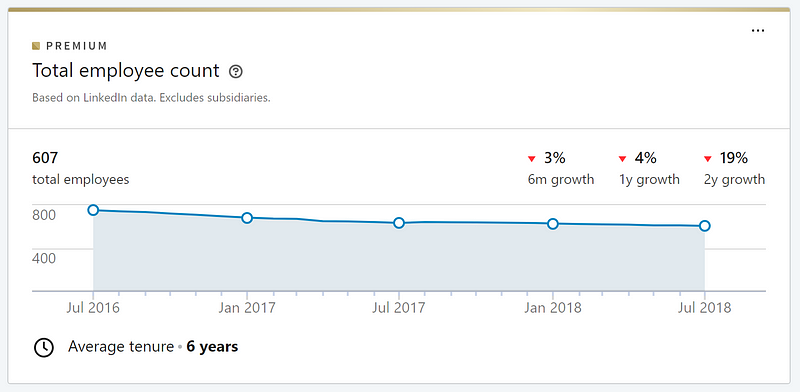
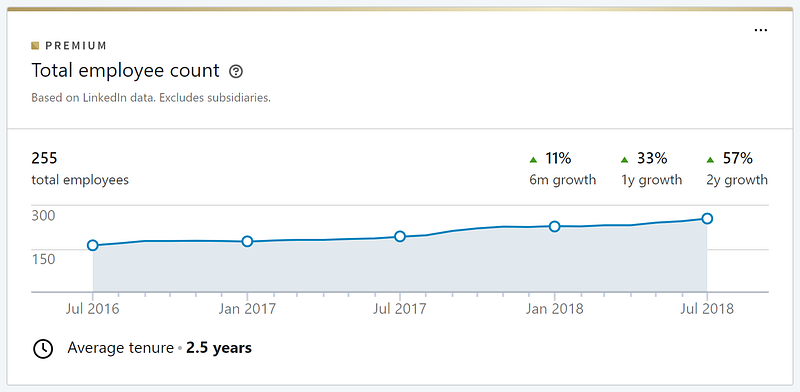
As a mathematician and computer scientist, Duolingo’s co-founder Luis von Ahn did not always believe in the power of product design.
But now, when asked for the most life changing book he’s ever read, he’d tell you it’s “The Design of Everyday Things” by Don Norman. Since he’s read the book, he’s obsessed with how products are designed.
And as a team lead by scientists, Duolingo doesn’t just improve design based on personal feelings. It uses data as its guiding star. 🌟
Three goals, three Duolingo teams: learning, growth and monetization
For Duolingo, the right user behavior means:
- Learning: people are more successful at learning
- Growth: more people learn
- Monetization: more revenue is generated to support its cause
That’s why Duolingo decided to create three teams to work on these three goals: a learning team, a growth team and a monetization team. 💡
Each team is responsible to improve the metrics linked to its specific goal by organizing product experiments.
5 Duolingo product experiments
The Duolingo homepage already gives a good idea of some of the ways its product is built to incite the right user behavior.

The fact that the software doesn’t even use “hearts” anymore, and doesn’t mention badges or its in-app coach “Duo”, is a clear example of how quick and often Duolingo runs product experiments to improve the product.
Here’s 5 notable experiments and the concrete impact they had. 👇
1/ Delayed signup
The Duolingo team found that by allowing users to sign up later and experience some Duolingo lessons first, it could boost the amount of daily active users by 20%. 💥
Based on these experiments the team introduced “soft walls”. Those are optional pages that ask people to sign up, but still allow them to hit “Later”.
Finally, after a series of lessons, there’s a “hard wall” that requires users to sign up. 🛑 The team found that the performance of this wall was actually also improved by the presence of the “soft walls” as users were already primed to sign up.
In the process of introducing the “soft walls”, Duolingo made a mistake it later had to correct: the team created a big red “Discard my progress” button. What it found later is that this button actually invited people to click on it instead of scaring them from clicking. Replacing it afterwards with a more subtle grey “Later” button made performance shoot up.
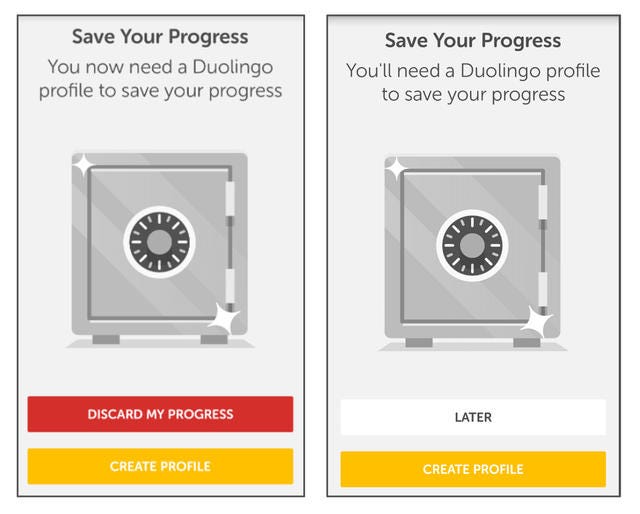
The team was able to improve daily active users by another 8.2% with these subsequent experiments. An extremely significant amount. 😲
2/ Streak
Another important product aspect the Duolingo team experimented with a lot, is the concept of the “streak”, which it borrowed from the gaming industry.
That means: if a user uses Duolingo for x consecutive days he or she builds up a streak. Users start feeling invested and they try not to break this streak. They reward persistence. 🎁
I’m personally on a 152 day streak right now and it’s my best motivation to keep going. 💪

The power of the streak on retention is so strong that the Duolingo team spends a lot of time optimizing it. It mainly makes it harder to lose the streak and make it easier to get it back by doing some exercises.
The team introduced “weekend amulets”, “streak repair”, “streak freeze”, … so that people can make up for their human failures. Introducing the amulet alone was responsible for a 4% increase in 14 day retention. ✨
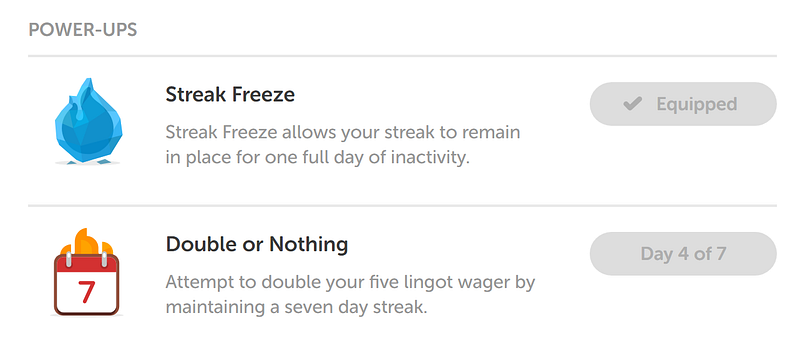
3/ Notifications
On top of that, the team was able to improve conversions over notifications by around 5% just by changing the copy and by testing different timings.
One of the most famous copy experiments is this passive aggressive notification: “Hi! It’s Duo. These reminders don’t seem to be working. We’ll stop sending them for now.”
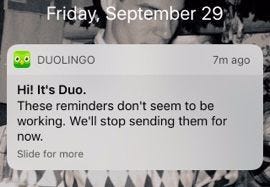
In terms of timing, the team found that 23.5 hours after their past learning session was the best moment to remind people to do their next session, as people usually learn at the same moment of the day.
4/ Badges
A classic gamification aspect the Duolingo team added is badges.
Badges display the user behavior Duolingo wants to promote. This includes: spending lingots (Duolingo’s virtual currency), starting wagers, keeping streaks, learning during weekends, being active in Duolingo’s built-in language clubs, …
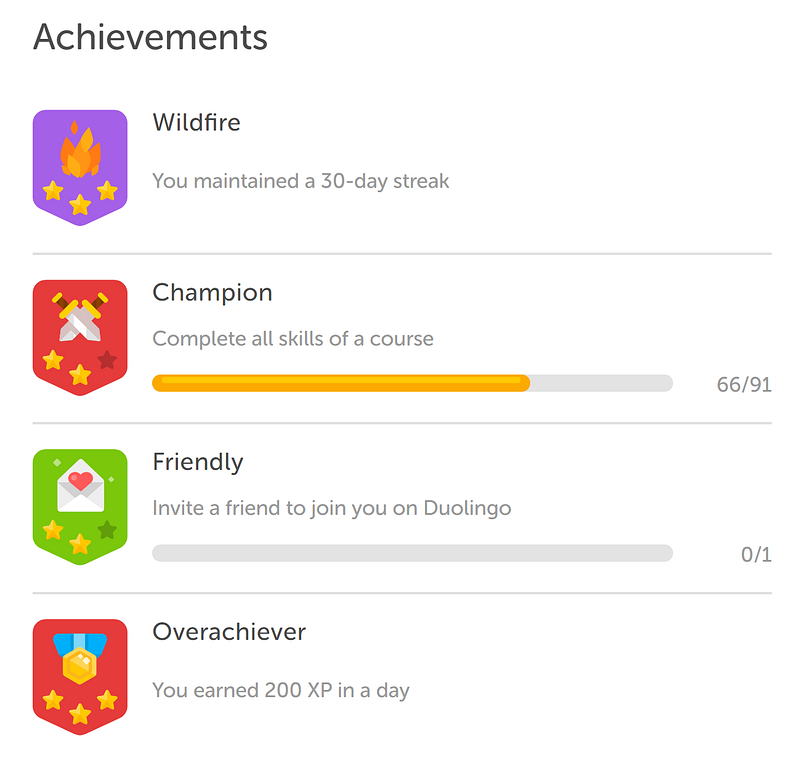
The first version of the badges system by itself (even without badge tiers, i.e. the stars in the above screenshot) already increased daily active users by 2.4%.
But it also stimulated very specific positive behavior: it increased purchases from the Duolingo store by 13% and increased the amount of friends added by 116%.
5/ In-app coach
One of the more controversial experiments within the Duolingo team was the introduction of the in-app coach called “Duo”, the supportive owl mascot. Some team members loved it, some disliked it and found it annoying.

Personal tastes aside, the guiding data star is always right. 🌟
The introduction of Duo improved 14 day retention by 7.2%. Almost as big a success as the badges. 🚀
Duolingo keeps lining up product experiments
Duolingo understands that stopping their improvement process means standing still. And standing still means failing in the end.
On the other hand, there’s an infinite amount of product experiments one can run and mindlessly starting experiments can prove to be a total waste of time.
That’s why the Duolingo team diligently keeps track of all possible product experiments, prioritizes them, and then plans them in accordingly.
To keep track, Duolingo adds the list of experiments to JIRA. (Note: Use whatever works. At Salesflare, we use GitHub for this instead of JIRA.)
To prioritize, they have 2 simple cost-benefit prioritization rules:
- What’s the potential impact of the experiment? The Duolingo team even decided that experiments with an impact of below 1% are not worth it.
- How long will it take to run the experiments?
Finally, when planning, they make a consistent choice to not ignore the small experiments in favor of the big ones. They believe that it’s the succession of an enormous amount of tiny improvements that leads to big results.

Way to go, Duolingo! 🙌 Keep going strong on your awesome mission.
The Salesflare team loves you. 😍
Want to check out more Iconic Products? Read the entire series here! 📲

We hope you liked this post. If you did, spread the word!
👉 You can follow @salesflare on Twitter, Facebook and LinkedIn.
Last updated:
- 7 Best CRMs for Mac in 2025 - September 19, 2025
- 7 Best HubSpot CRM Alternatives in 2025 - September 17, 2025
- 7 Best Pipedrive Alternatives in 2025 - September 16, 2025